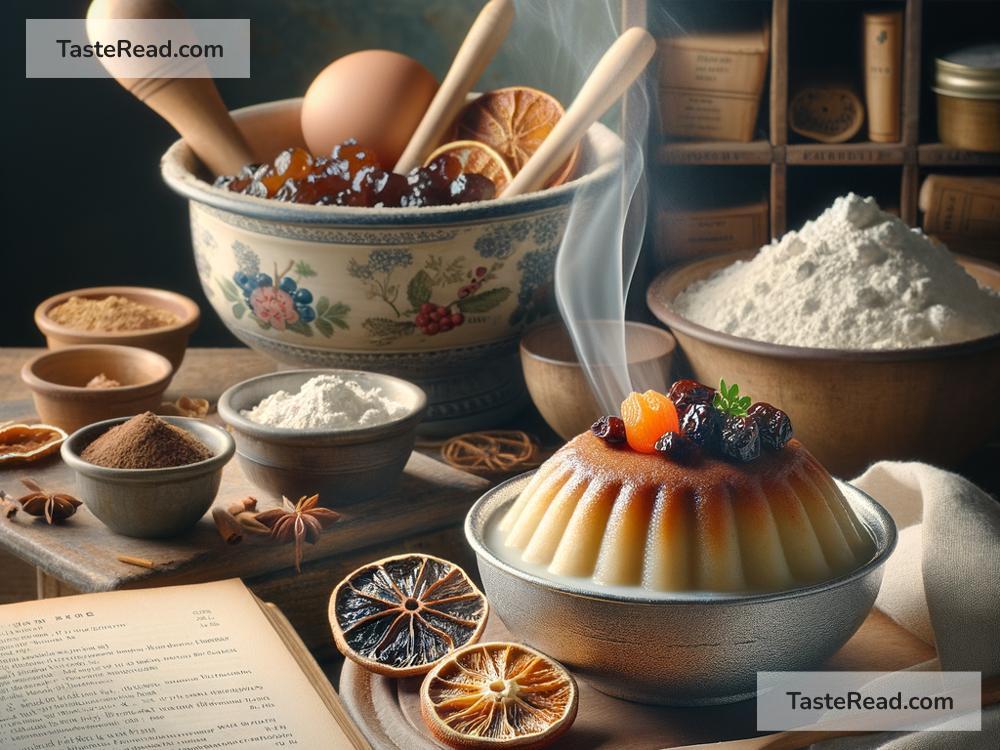The Development of English Puddings: A Delicious History
English puddings are a classic part of British cuisine, loved for their rich flavors and comforting textures. From sweet desserts to savory dishes, puddings have been a key part of English food culture for centuries. But how did pudding develop into what we know today? Let’s explore the fascinating history behind this iconic food, in simple terms.
What is Pudding?
When we hear the word “pudding,” it might mean different things to different people. In modern-day England, pudding refers to a broad range of dishes. It can be a sweet dessert, like sticky toffee pudding, or a savory dish, like steak and kidney pudding.
However, the meaning of pudding has changed a lot over time. Originally, “pudding” was not the gooey cake-like dessert we often think of today. Hundreds of years ago, pudding meant something closer to a sausage—a mixture of ingredients stuffed into a casing and steamed or boiled.
The Beginnings of Pudding
The story of pudding starts in medieval England. Back then, life was hard, and food preparation was simple. People wasted nothing, so meat, grains, and vegetables were often mixed together and cooked inside an animal stomach or intestine. This early form of pudding was practical—it was a way to make use of leftovers as well as preserve food. These early puddings were mostly savory, not sweet.
A good example of this style of pudding is black pudding, which is still eaten today. Black pudding is a blood sausage made with pork blood, fat, and oats. Though not everyone enjoys eating it, it shows how puddings in medieval times were designed to be filling and economical.
Pudding Goes Sweet
By the 17th century, English puddings started to change. Sugar became more widely available in England thanks to trade with countries like the Caribbean, where sugar plantations were growing. As sugar became cheaper, cooks began experimenting with it, adding sweetness to their pudding recipes.
One example of this change is the famous plum pudding, also known as Christmas pudding. Plum pudding doesn’t actually contain plums; the name comes from the old English word for raisins. This pudding came to symbolize festive celebrations, as it was rich, sweet, and full of dried fruits and spices. Families would eat it during Christmas, and it became a tradition that continues today.
The Rise of Steamed Puddings
During the 18th and 19th centuries, pudding recipes continued to evolve. The invention of pudding cloth—a cloth used to wrap pudding ingredients during cooking—made puddings easier to prepare. People could mix ingredients, wrap them in cloth, and boil or steam them to create tasty, solid puddings. This method gave puddings their round shape and smooth texture.
Steamed puddings became a staple of Victorian England. Famous puddings like treacle sponge pudding and spotted dick (a suet pudding with dried fruits) became popular. These puddings were not only filling but also affordable, making them ideal for working-class families during times of economic hardship.
Savory Puddings: A Staple
While sweet puddings gained popularity, savory puddings remained an important part of English cooking. Dishes like Yorkshire pudding became a favorite accompaniment to roast beef. Interestingly, Yorkshire pudding isn’t a pudding in the traditional sense. It’s made by baking a batter of flour, eggs, and milk, and it rises into a golden, crispy side dish. It’s often eaten with gravy.
Another famous savory pudding is steak and kidney pudding, where beef, kidneys, and gravy are cooked inside a suet pastry shell. This dish is hearty and warm, making it a classic comfort food for cold English winters.
Modern Pudding: A Mix of Old and New
Today, puddings have come a long way. Modern English puddings include everything from traditional steamed dishes to lighter, baked desserts that are influenced by other cuisines. For instance, sticky toffee pudding, a sponge cake covered in rich toffee sauce, has become a favorite dessert not just in England but in many other countries as well.
Black pudding, plum pudding, and steak and kidney pudding remain popular, especially among those who enjoy traditional cooking. At the same time, chefs and home cooks continue to invent new pudding recipes, combining old techniques with modern ingredients.
Why Do English Puddings Matter?
English puddings are more than just food; they’re a connection to history. They tell the story of how people lived, ate, and celebrated through the centuries. From humble beginnings as a way to preserve food, puddings became a symbol of both tradition and creativity.
Whether you’re enjoying a sweet slice of Christmas pudding or a savory bite of Yorkshire pudding, you’re taking part in a tradition that has been passed down for generations.
Conclusion
The development of English puddings is a journey through history. From the simple medieval dishes to the sugar-filled desserts of today, puddings have balanced practicality with indulgence. They’ve adapted to changing times, new ingredients, and the tastes of countless generations.
So next time you see pudding on a menu or bake one in your kitchen, remember the rich history behind this beloved dish. English puddings are proof that food is more than just sustenance—it’s a story that connects us to the past while shaping our future.


